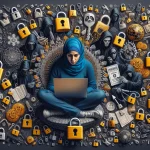
Federal Court Declares Fair Use of Copyrighted Books for AI Training
In a landmark decision that is setting the technology and publishing industries abuzz, a federal judge has ruled that the use of copyrighted books for artificial intelligence (AI) training falls under the doctrine of fair use. This groundbreaking ruling stems from a case that has been watched closely by both Silicon Valley titans and book publishers alike, as it holds implications for the future of copyright law in the digital age.
The Case that Captured Attention
This legal battle unfolded against a backdrop of rapidly advancing AI technologies and the growing use of these systems to tackle complex problems across various sectors. At the heart of the case was a dispute over whether copyrighted materials, specifically books, could be used to train AI models that perform tasks such as language processing, translation, and even creative writing. This case highlights the ongoing struggle to balance technological innovation with intellectual property rights.
The legal dispute pitted a coalition of authors and publishers against a leading AI company that had utilized a vast library of copyrighted books to enhance the language processing capabilities of its AI systems. The plaintiffs argued that such use violated copyright laws by commercially exploiting their works without proper authorization or compensation.
Understanding the Court's Ruling
The federal judge overseeing the case issued a ruling that favored the AI company, citing the principle of fair use. This doctrine allows limited use of copyrighted material without permission from the rights holders, under certain circumstances. In delivering the ruling, the judge emphasized several key factors:
- Purpose and Character of Use: The court considered whether the AI company’s use of the copyrighted books was transformative. It ruled that using the books to improve AI capabilities constituted a transformative use, as it went beyond mere reproduction and instead added new insights and purposes to the original works.
- Nature of the Copyrighted Work: While some books are highly creative, the court found that the factual information extracted for AI training purposes was less protected under copyright law.
- Amount and Substantiality: The court noted that the AI company did not use entire books but rather extracted passages necessary for training purposes, further supporting the argument for fair use.
- Effect on the Market: Finally, the court opined that the AI company’s use did not directly compete with the sales of the original books, thus minimizing any adverse impact on the market value of the copyrighted works.
Implications for the Technology Sector
This ruling is expected to have far-reaching implications, particularly for technology companies that are heavily invested in AI development. By affirming the fair use of copyrighted books for AI training, the court has set a precedent that could shield tech firms from future litigation challenges, potentially paving the way for more robust AI advancements and innovations.
For tech companies, the decision removes a significant legal hurdle, granting them more latitude to leverage vast, diverse datasets without fear of infringing on copyright laws. It could accelerate research and development, leading to breakthroughs in AI applications, from improved natural language processing to more accurate and nuanced AI-generated content.
The Road Ahead
Despite this victory for the tech industry, the debate over copyright and AI is far from settled. Industry experts and legal analysts predict that this case is likely to be appealed, with potential escalations to higher courts. The outcome of future proceedings could further refine or alter the interpretations of copyright law as it pertains to AI technologies.
Moreover, this ruling has ignited discussions on the need for updated copyright laws that better reflect the realities of the digital era. Some advocates argue for legislation that clearly delineates the boundaries of fair use in the context of AI and other emerging technologies, to provide clearer guidelines for creators, rights holders, and tech companies alike.
The Bigger Picture: Creativity Meets Technology
This court decision also highlights the broader, ongoing conversation about the intersection of creativity and technology. While AI promises new avenues for innovation, it also challenges our traditional understandings of creativity, originality, and ownership. As AI systems increasingly contribute to creative processes, society must grapple with complex questions about the nature of creativity and the value we place on human versus machine-generated content.
For authors, artists, and other creatives, this ruling may prompt a reevaluation of how to protect their works in a world where AI plays a pivotal role. Some may embrace AI as a tool for enhancing creativity, while others may remain cautious about its implications for intellectual property rights.
A Landmark Decision with Global Impact
The ripple effects of this ruling are sure to be felt globally. Other jurisdictions with similar legal frameworks may look to this decision as a reference point, potentially harmonizing international perspectives on fair use in the AI context. As the conversation evolves, stakeholders worldwide will need to engage in constructive dialogue to ensure that technological progress does not come at the expense of artistic and literary creativity.
In conclusion, the federal court’s decision marks a turning point in the ongoing dialogue between technology and intellectual property law. As AI continues to revolutionize the way we live, work, and create, it is essential to find a balance that fosters innovation while respecting the rights of creators. The unfolding narrative is one of both excitement and caution, as we collectively navigate the uncharted territories of innovation in the 21st century.









